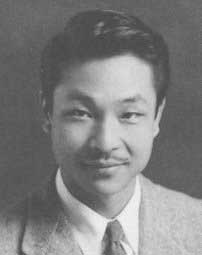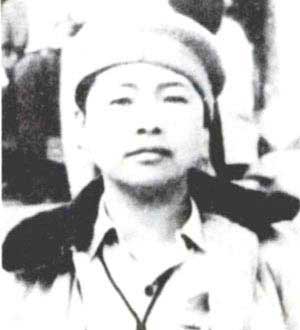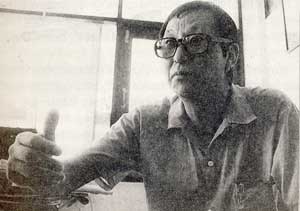Many readers have told SHAN they had never heard of Kokang until 1989, when the former ethnic forces of the Communist Party of Burma (CPB) mutinied and concluded ceasefire pacts with Rangoon.
We therefore hope this chronology will help shed some light on this truly fascinating people.
Geography
Kokang lies east of the Salween, between China in the north and east, Shan State proper in the west and Wa in the south. Wa and Kokang are divided by the Namting that flows east to west into the Salween.
 Kokang is 2,200 sq.km. known for its tea plantations and opium production. During the British days, it was said to produce 30% of Shan State’s total output (Wa was 60% and Loimaw 10%).
Kokang is 2,200 sq.km. known for its tea plantations and opium production. During the British days, it was said to produce 30% of Shan State’s total output (Wa was 60% and Loimaw 10%).
17th century Kokang founded by the Yangclan loyal to the Ming dynasty who fled to Yunnan. The capital was Ta Xuetang (Ta Shwehtang).
19th century Became part of British Hsenwi State in northern Shan States
World War II (1939-45) Fights under Kuomintang forces against Japanese occupiers of Burma.
1947 Secedes from Hsenwi, becomes the 34th principality of Federated Shan States.
1949 Yang Zhensai (Edward Yang) becomes Saofa (One of his sisters is the colorful and manly Yang Jinsiu aka Olive Yang).
1959 Yang Zhensai joins other Saofas in relinquishing traditional power to the Shan State Government
1962 Military coup by Gen Ne Win. Most fomer Saofas including Yang detained.
1963 Jimmy Yang aka Yang Zhensheng aka Sao Ladd, Edward’s brother forms Kokang Revolutionary Force
1964 KRF joins Shan State Army as its Fifth Brigade but later split into several factions.
 1967 Peng Jiasheng, one of the Kokang commanders, invited to China to form the Kokang People’s Liberation Army (KPLA)
1967 Peng Jiasheng, one of the Kokang commanders, invited to China to form the Kokang People’s Liberation Army (KPLA)
1968 Communist Party of Burma (CPB), backed by China, enters Shan State. KPLA becomes part of CPB forces
1989 11 March: Peng mutinies, an act followed by Wa, Mongla and Kachin forces. All conclude ceasefire agreement with Burma’s military government
1992 Ousted by Yang Mouliang but returns to power two years later
Latest developments
April All ceasefire groups told by Naypyitaw ceasefire era is over and they have to transform themselves to Border Guard Forces (BGF), nominally commanded by ethnic officers but run by the Burma Army officers
July Peng expels 6 executive members including his deputy Bai Souqian and Liu Guoxi. They had reportedly been angry with Peng for unfair distribution of power and were in favor of the BGF status. They defect to the Army
6 August Junta investigators arrive to look for drug refineries and an arms factory, after allegedly reported by the 6 defectors of their existence. Peng stalls
8 August Burma Army arrives in force, Kokang army surrounds it. Intercession by China saves the day. Burma Army returns home without finding anything.
10 August Five pro-Peng officials invited to Lashio and detained. Two sent to Laogai to persuade Peng to attend meeting in Lashio. He declines to come.
 21 August Peace and Democrat Front (PDF) issues statement in support of Peng and urges Naypyitaw to resolve all differences and disagreements peacefully.
21 August Peace and Democrat Front (PDF) issues statement in support of Peng and urges Naypyitaw to resolve all differences and disagreements peacefully.
22 August Police serves summons for Peng, his brother Jiafu and his two sons (Daxun and Dali) to appear in court. Again he declines to.
24 August Police issues arrest for Peng and three others
25 August Burma Army comes in force and sets up a new provisional executive committee led by Bai Souqian. Peng retreats to the border.
27 August Fighting, mainly in Laogai and Qingsuihe (Chin Shwe Haw) on the border with Wa.
28 August Peng issues statement exhorting his allies to rise and fight
29 August The bulk of Kokang force retreats into China and disarmed by PLA. The remainder continues to fight



